This post may contain affiliate links. Please read our disclosure policy.
Ready in just 30 minutes, this fragrant kimchi fried rice comes with spicy gochujang paste, sour kimchi, smoky sausages, and scallions. This Korean classic is wok-fried to perfection and superbly seasoned!

⭐️ Why You Should Try This Recipe
- Spicy, comforting, and loaded with bold flavors. With a balance of sweet, sour, and spicy, this fried rice will delight your tastebuds! Plus, it’s packed with texture! It can be enjoyed year-round but shines during the colder months offering warmth that is hard to resist.
- It’s a great way to use leftover rice. This recipe is just perfect if you happen to have cooked rice sitting in your refrigerator. Throw it in a pan with vegetables and kimchi, and you are good to go!
- One pan and 10 ingredients. You won’t believe how quickly this dish comes together. It takes less than 30 minutes and is ridiculously easy to make!
📘 What is Kimchi Fried Rice
Kimchi fried rice (김치 볶음밥 – Kimchi Bokkeumbap) is a classic South Korean dish that consists of cooked rice stir-fried with chopped kimchi and vegetables, along with other ingredients such as eggs or meat.
🍚 Ingredient Notes
This vegan fried rice recipe requires 10 basic and easy-to-find ingredients. Here is what you will need:
- Cooked rice – Preferably day-old cooked rice. Cook the rice the day before and store it in the refrigerator or use leftover rice. I advise against using freshly cooked rice as it would result in a moist texture.
- Kimchi – You can use store-bought or homemade vegan kimchi. If using store-bought, check the label to ensure it is vegan. Kimchi often includes fish sauce and/or shrimp.
- Garlic and green onions – For a pungent flavor and a vibrant green color.
- Mushrooms – I went with button mushrooms, but any mushroom will work.
- Carrots – Finely dice them so they can cook quicker. I usually aim for 1/4-inch thick cubes.
- Vegan sausage – Optional but recommended. The addition of vegan sausages gives this dish a wonderful smoky flavor.
- Gochujang – For spiciness, umami, and saltiness. Gochujang also gives the rice a vibrant red color.
- Sugar – To balance with the spiciness. You can use granulated white, coconut, or light brown sugar.
- Sesame seeds – For nuttiness. Use toasted sesame seeds.

🥣 How to Make Vegan Kimchi Fried Rice
1. Fry the aromatics
- Heat the oil. Start by heating a couple of tablespoons of oil in a wok or non-stick pan over medium heat. Use a neutral oil like canola or grapeseed oil.
- Sauté the aromatics. Next, add the garlic and green onions, and sauté for 2-3 minutes, stirring regularly.
2. Stir-fry vegetables and rice
- Add the diced veggies. At this point, turn up the heat to high and sauté the chopped carrots and mushrooms for 2-3 minutes, or until carrots are almost cooked but still slightly crunchy.
- Add the kimchi and rice. Stir in the chopped kimchi and vegan sausage if using, and cook for 2 more minutes. Then, add the cooked rice and stir to combine it with the vegetables.
- Pour in the sauce. Add the gochujang sauce and toss to combine the rice and vegetables with the sauce.
- Stir-fry. Sauté the rice for another 3-5 minutes or until it has absorbed the sauce. I personally like the rice slightly charred, but that is up to you.
- Serve. Finally, garnish with extra green onions, a sprinkle of sesame seeds, and optionally, some crispy nori strips!
🌽 Optional Add-ins
This fried rice recipe is versatile, so feel free to include extra vegetables or your protein of choice:
- Plant-based protein: Tofu, vegan chicken, or tempeh would make fantastic additions.
- Vegetables: Diced pak choi, edamame, green peas, etc. Use what you have on hand!
- Vegan cheese: You can top the piping-hot fried rice with grated vegan cheese before serving it for more deliciousness.
- Pickles: For extra crunch, garnish with pickled cucumbers!
❄️ Freezing
To freeze kimchi fried rice, let it cool down completely before transferring it to a freezer-safe container or bag. It will keep for up to 2 months in the freezer. Thaw in the refrigerator overnight before reheating it in a pan over medium heat.
📔 Tips
- Use leftover rice. For optimal texture, I highly recommend using day-old rice. Freshly cooked rice tends to have a too-moist consistency, while leftover rice refrigerated overnight will be dryer.
- Use high-heat. For a slightly charred flavor and crispiness, cook the fried rice in a wok or non-stick pan over high heat.
- Do not overcook the vegetables. You do not want mushy vegetables, so do not overcook them. Usually, cooking them for 2-3 minutes is enough.
- Use frozen vegetables. Feel free to use a mix of frozen diced vegetables if you are short on time.
- Customize the spiciness. You can reduce or omit the gochujang paste if you want a milder spiciness. In that case, keep in mind that your fried rice won’t have a deep red hue, and you will need to adjust saltiness.
- Add a pinch of glutamate. This is totally optional, but if you want to make this dish better than takeout, a pinch of MSG (or mushroom seasoning) goes a long way. It improves the overall flavor of the dish.

💬 FAQ
While you can use freshly cooked rice, I do not recommend it as it would result in a soggy texture. For the best texture, use day-old rice that has chilled in the refrigerator for at least 24 hours.
Yes, this recipe works great with cooked brown rice, quinoa, or even farro.
Reheat it in a non-stick pan over medium heat for a few minutes.
I would say it is mildly spicy if you are used to spicy dishes. Obviously, it all depends on your spiciness tolerance level.
Both work, but generally, well-fermented kimchi will bring more flavor. This recipe is a great way to use old kimchi that is too sour.

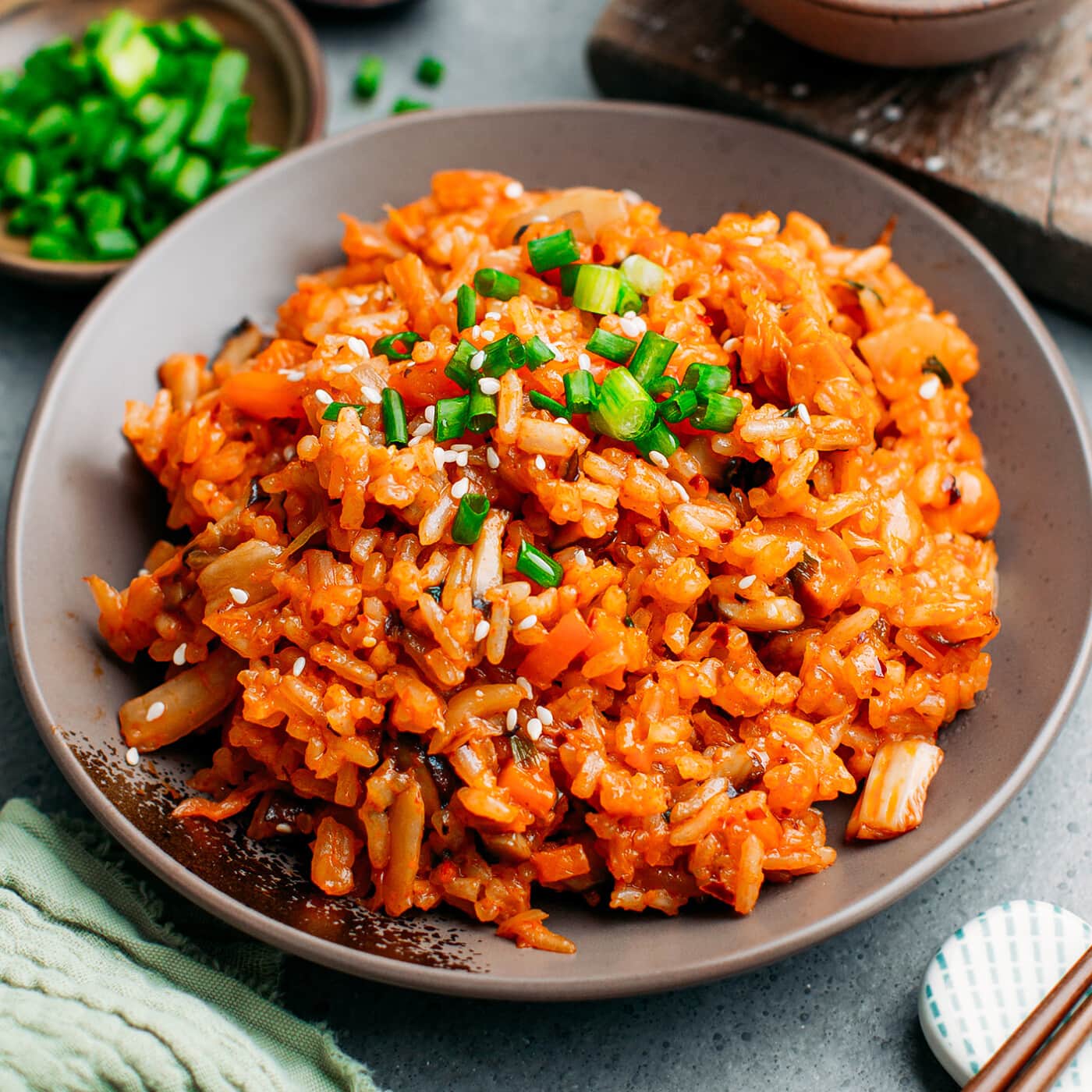
Kimchi Fried Rice
Ingredients
- 2 tbsp oil
- 2 cloves of garlic minced
- 1/4 cup chopped green onions
- 3-4 cremini mushrooms finely diced
- 1 small carrot finely diced
- 1 cup kimchi chopped
- 1/2 cup chopped vegan sausages optional
- 2 cups cooked white rice
Sauce
- 3 tbsp kimchi brine
- 1 tbsp Gochujang
- 1 tsp sugar
- 1 tsp toasted sesame oil
- 1 tsp toasted sesame seeds
Instructions
- Prepare the sauce. In a small bowl, combine the kimchi brine, gochujang paste, sugar, toasted sesame oil, and sesame seeds. Set aside.
- Sauté the aromatics. Start by heating a couple of tablespoons of oil in a wok or non-stick pan over medium heat. Once hot, add the garlic and green onions, and sauté for 2-3 minutes, stirring regularly.
- Add the diced veggies. At this point, turn up the heat to high and sauté the chopped carrots and mushrooms for 2-3 minutes, or until carrots are almost cooked but still slightly crunchy.
- Add the kimchi and rice. Add in the chopped kimchi and vegan sausages if using, and cook for 2 more minutes. Then, add the cooked rice and stir to combine it with the vegetables.
- Pour in the sauce. Add the gochujang sauce and toss to combine the rice and vegetables with the sauce.
- Stir-fry. Sauté the rice for another 3-5 minutes or until it has absorbed the sauce. I personally like the rice slightly charred, but that is up to you.
- Serve. Finally, garnish with extra green onions and a sprinkle of sesame seeds.
Notes
- Use leftover rice. For optimal texture, I highly recommend using day-old rice. Freshly cooked rice tends to have a too-moist consistency, while leftover rice refrigerated overnight will be dryer.
- Use high-heat. For a slightly charred flavor and crispiness, cook the fried rice in a wok or non-stick pan over high heat.
- Do not overcook the vegetables. You do not want mushy vegetables, so do not overcook them. Usually, cooking them for 2-3 minutes is enough.
- Use frozen vegetables. Feel free to use a mix of frozen diced vegetables if you are short on time.
- Customize the spiciness. You can reduce or omit the gochujang paste if you want a milder spiciness. In that case, keep in mind that your fried rice won’t have a deep red hue, and you will need to adjust saltiness.
- Add a pinch of glutamate. This is totally optional, but if you want to make this dish better than takeout, a pinch of MSG (or mushroom seasoning) goes a long way. It improves the overall flavor of the dish.
Nutrition

About the Author
Thomas Pagot is the founder, photographer, and recipe developer behind Full of Plants. He created the blog in 2016 as a personal cookbook for vegan recipes. Through years of recipe development, Thomas has successfully grown Full of Plants into a trusted resource for plant-based recipes.

🧀 25 Mind-Blowing Vegan Cheese Recipes!
Sign up for the Full of Plants newsletter and you’ll get new recipes delivered by email weekly, PLUS your FREE 100-page printable eBook!

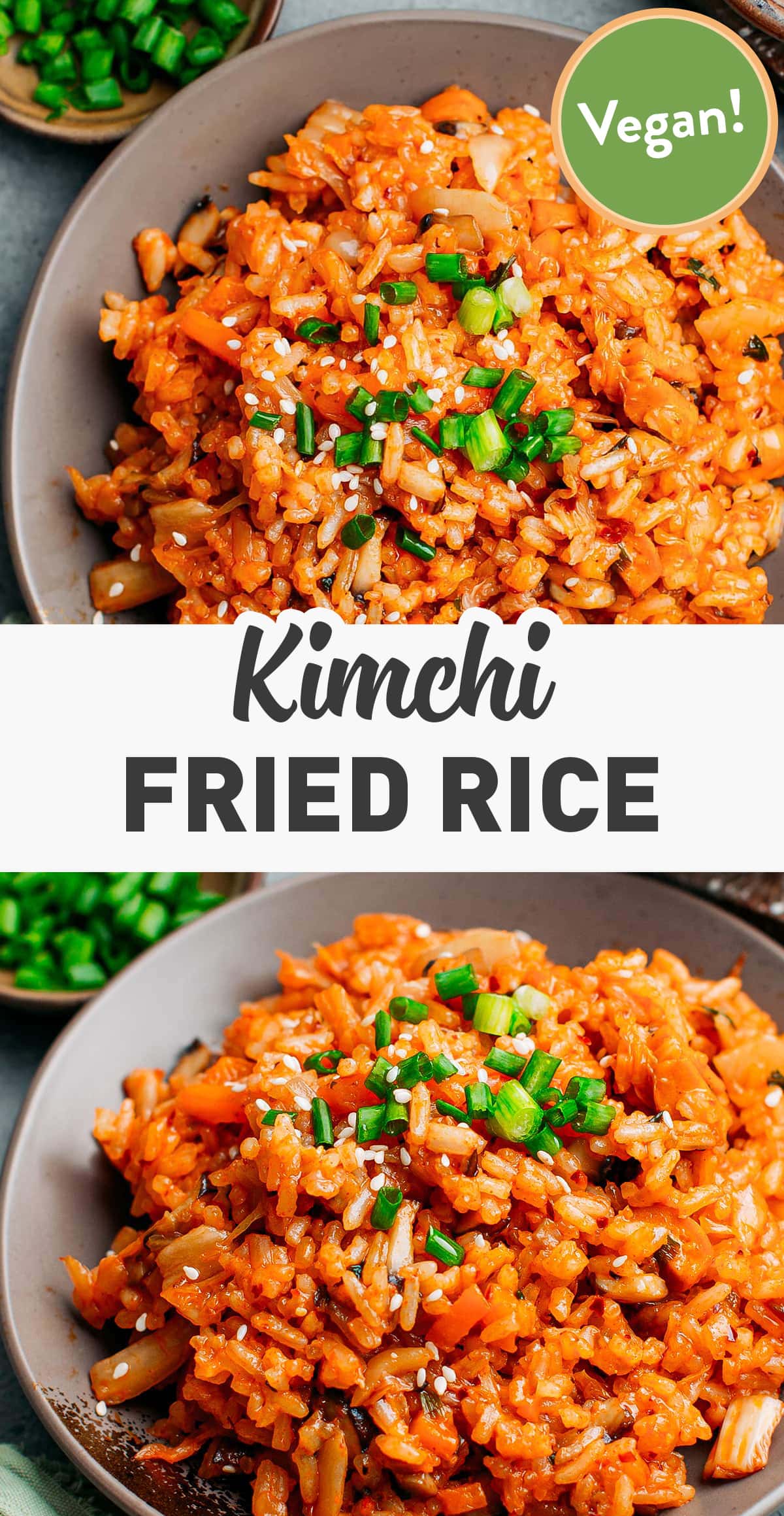
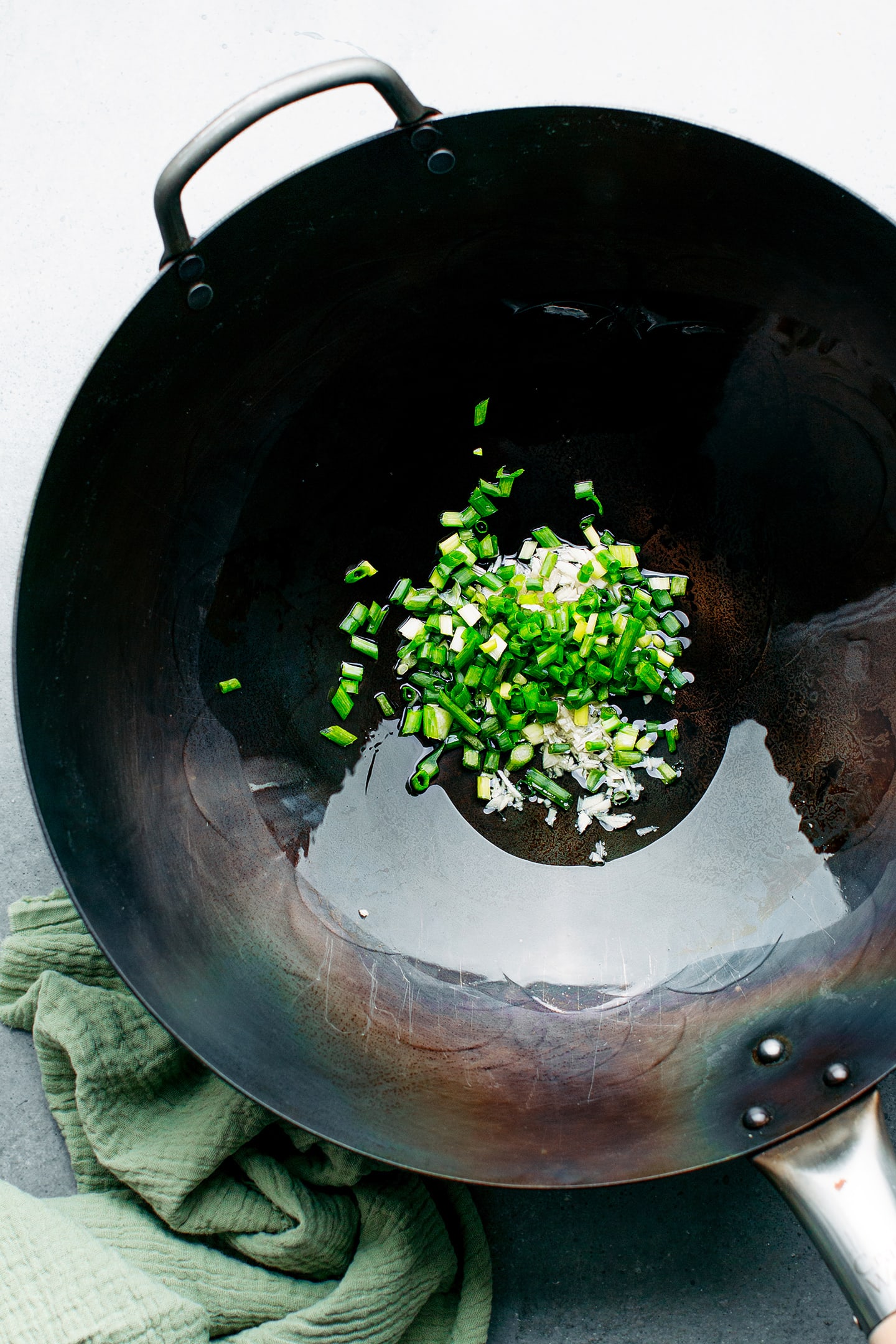
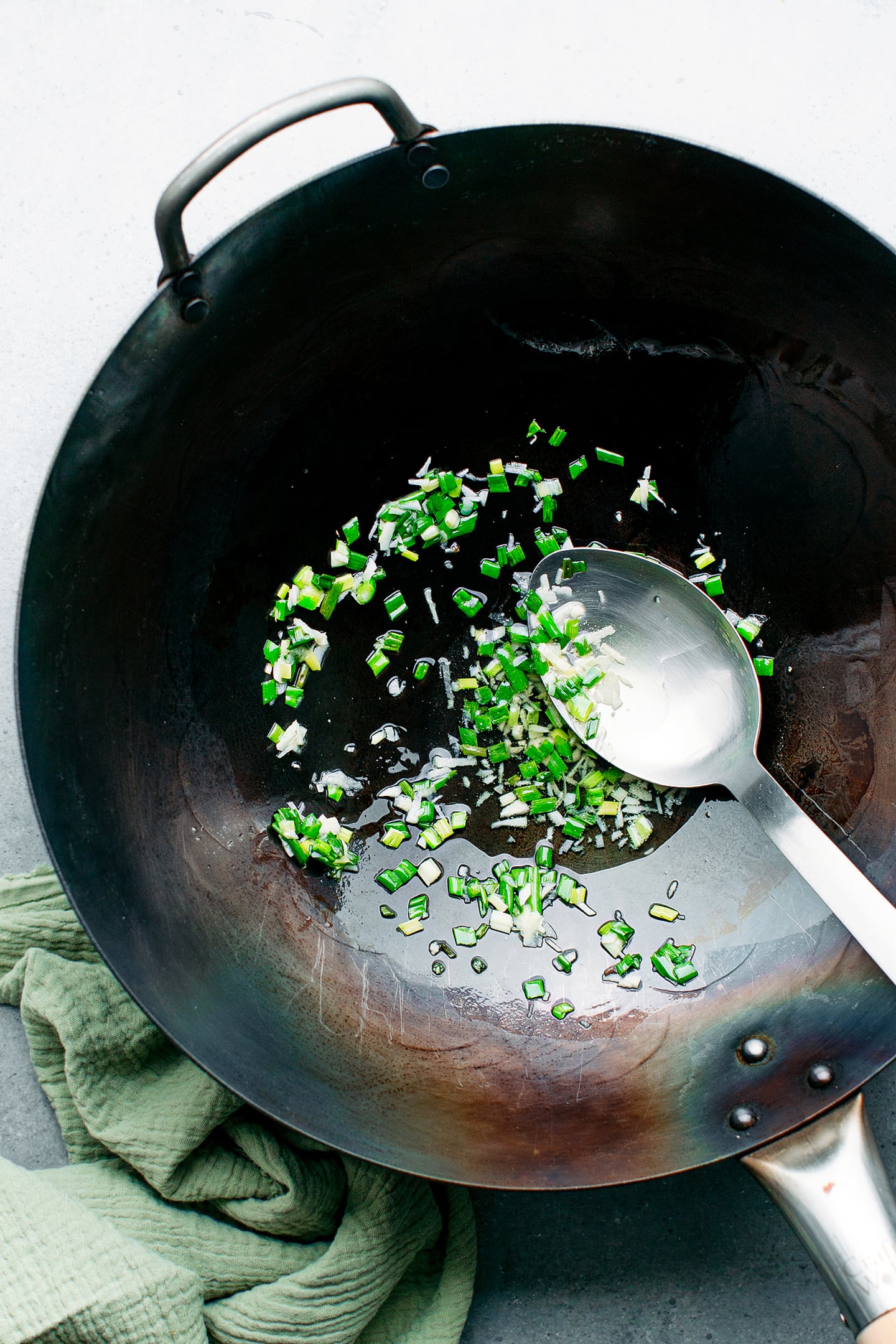


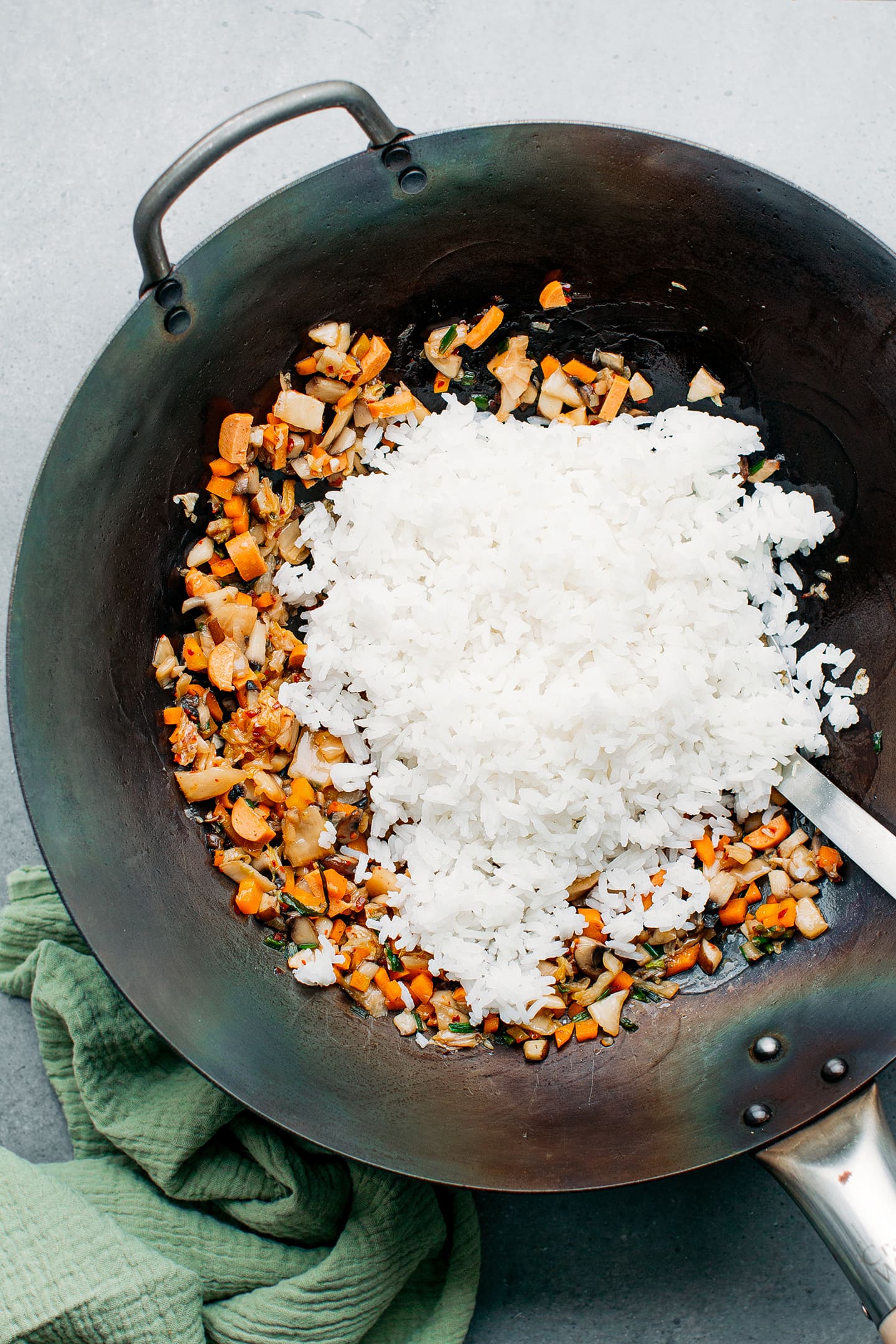
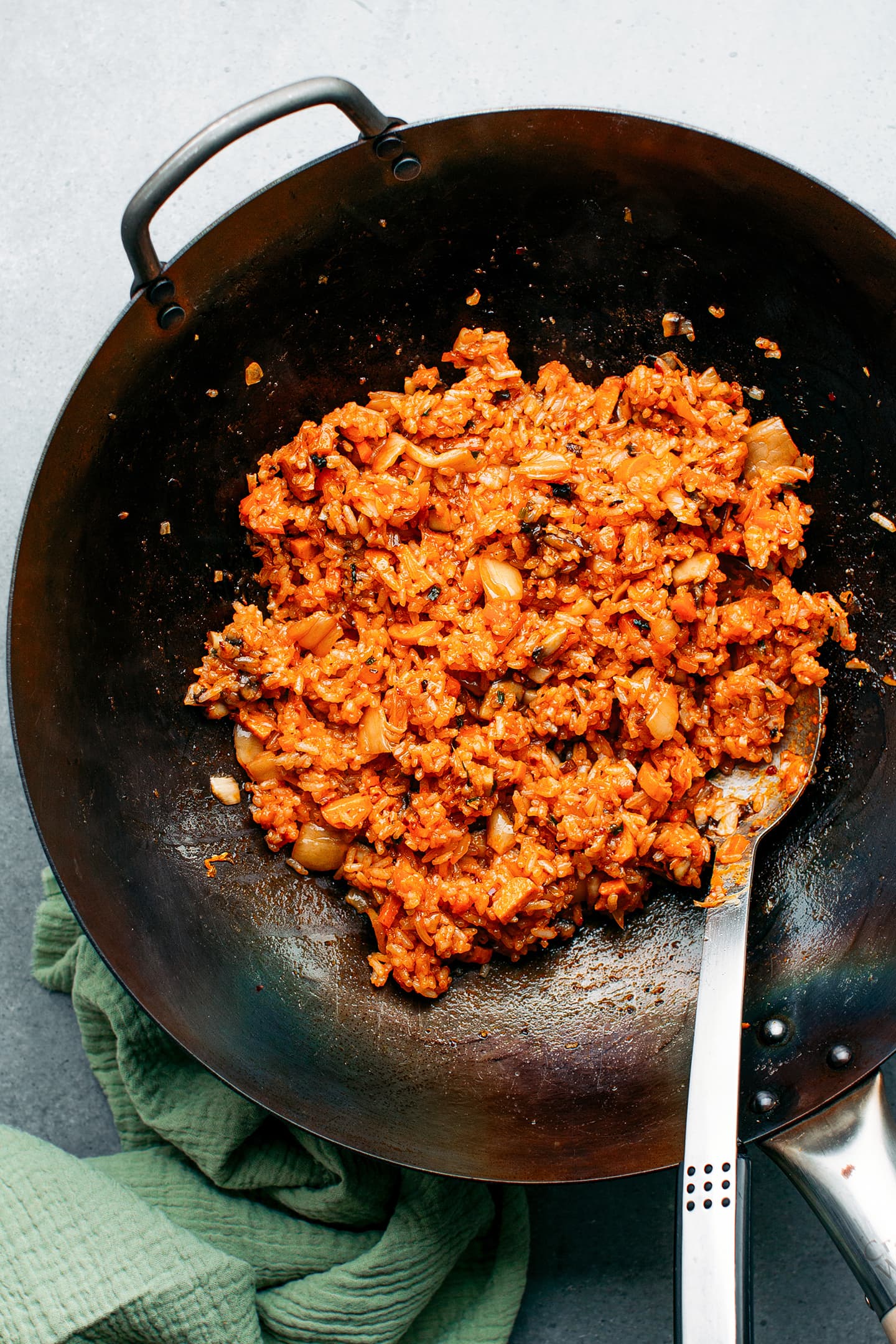
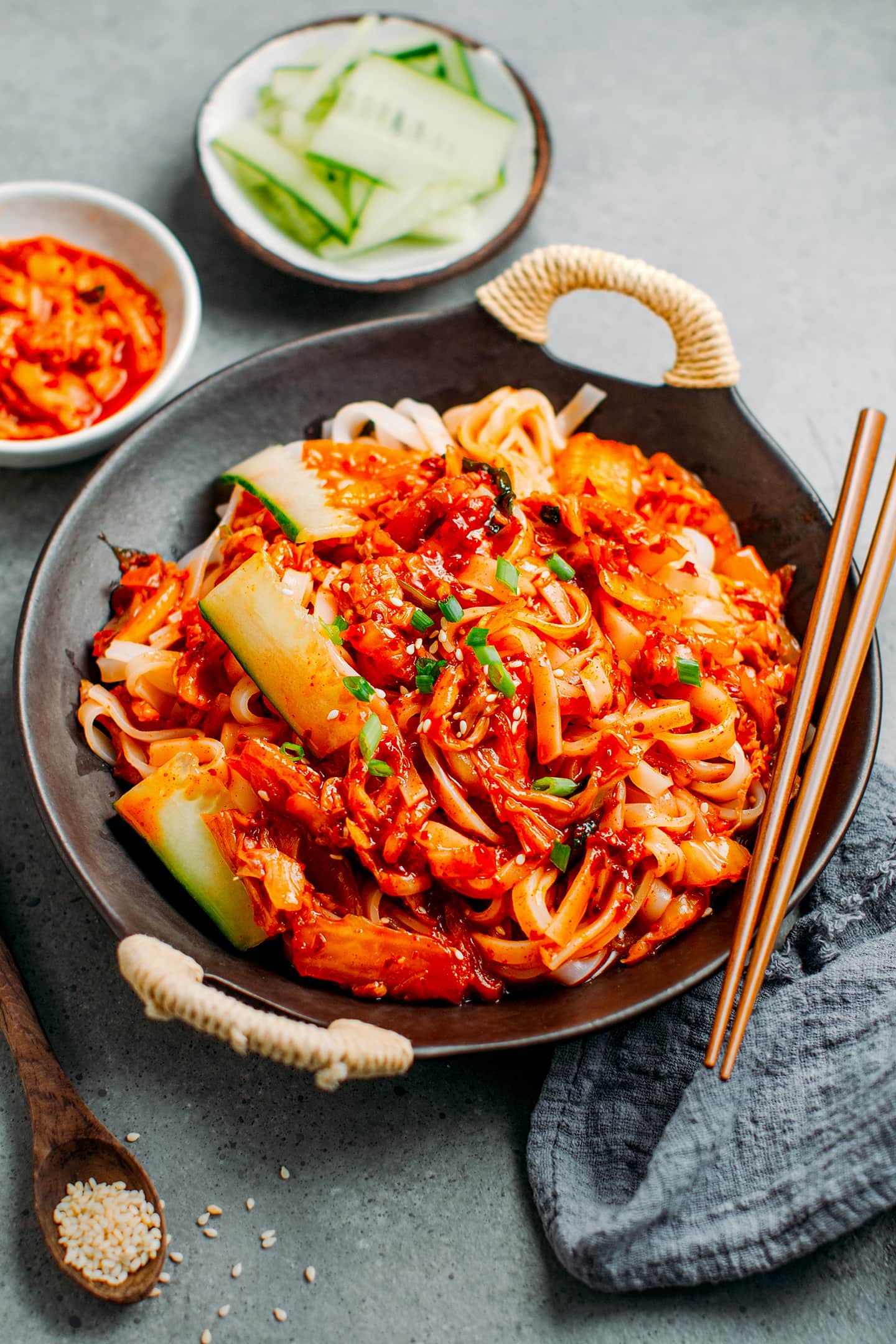


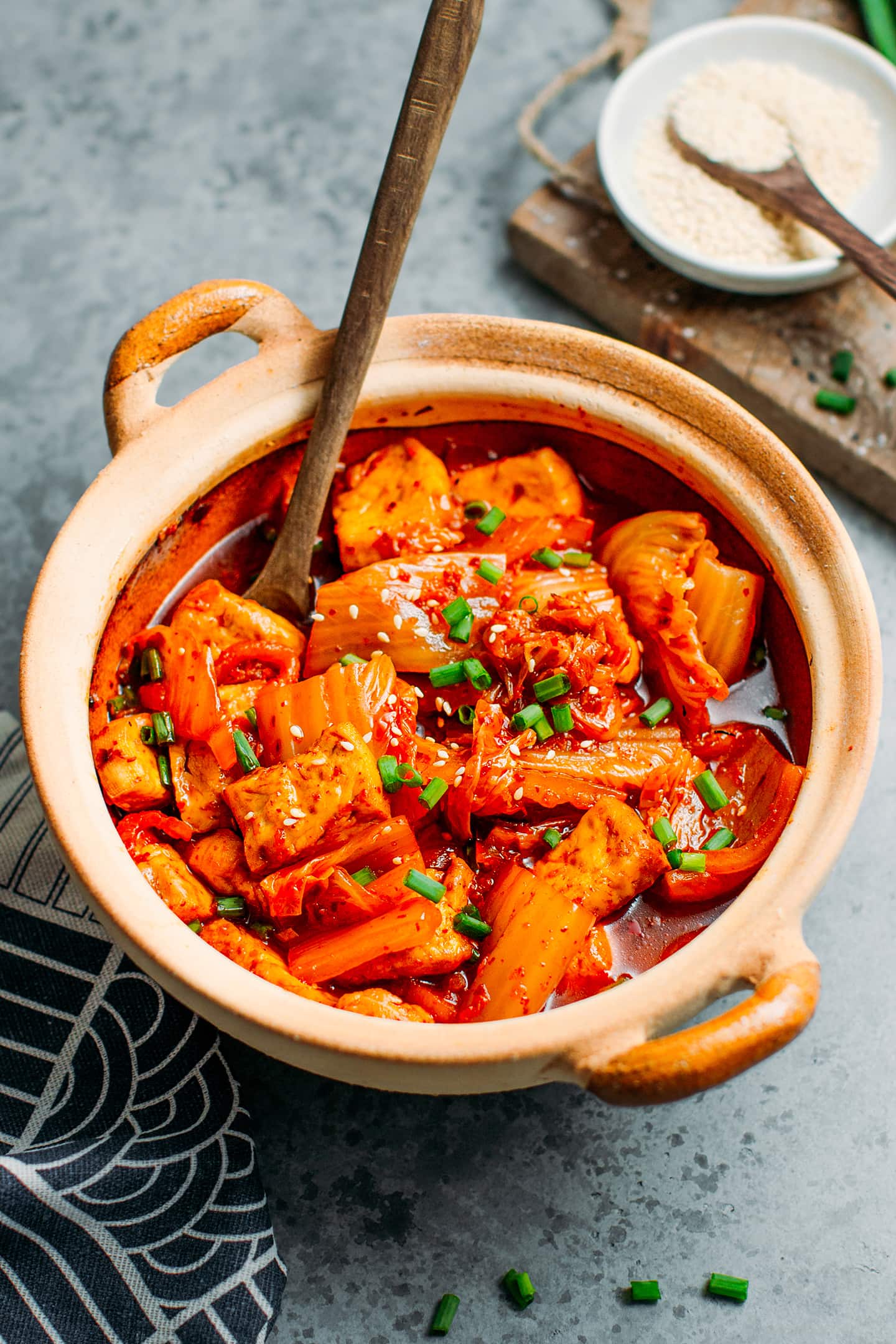
I love any kinds of fried rice. I’ll try this for weekend. Thank you for sharing!
Let me know when you try it 🙂
No soy sauce is required for this dish? Or does the Kimchi brine sufficiently give it a salty, sour, and spicy taste already? Thanks.
That is correct, both the kimchi brine and the gochujang add saltiness. You can of course add a bit of soy sauce if it’s not salty enough for you (that depends on your kimchi).